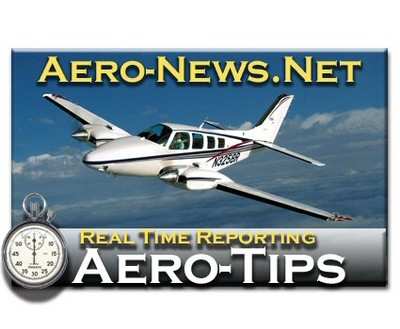Aero-Tips!
A good pilot is always learning -- how many times have you heard
this old standard throughout your flying career? There is no truer
statement in all of flying (well, with the possible exception of
"there are no old, bold pilots.") It's part of what makes aviation
so exciting for all of us... just when you think you've seen it
all, along comes a scenario you've never imagined.

Aero-News has called upon the expertise of Thomas P. Turner,
master CFI and all-around-good-guy, to bring our readers -- and us
-- daily tips to improve our skills as aviators, and as
representatives of the flying community. Some of them, you may have
heard before... but for each of us, there will also be something we
might never have considered before, or something that didn't
"stick" the way it should have the first time we memorized it for
the practical test.
It is our unabashed goal that "Aero-Tips" will help our readers
become better, safer pilots -- as well as introducing our
ground-bound readers to the concepts and principles that keep those
strange aluminum-and-composite contraptions in the air... and allow
them to soar magnificently through it.
Look for our daily Aero-Tips segments, coming each day to you
through the Aero-News Network. Suggestions for future Aero-Tips are
always welcome, as are additions or discussion of each day's tips.
Remember... when it comes to being better pilots, we're all in this
together.
Aero-Tips 06.01.06
 I'm allergic to Kansas.
Or at least something out here (where I've lived off and on for 16
years) disagrees with me, and I get a sinus infection two or three
times each year.
I'm allergic to Kansas.
Or at least something out here (where I've lived off and on for 16
years) disagrees with me, and I get a sinus infection two or three
times each year.
Trust me: Avoid flying when you have a sinus headcold.
AIM musings
The Aeronautical Information Manual (AIM)
tells us why sinus problems can be a flight hazard:
During ascent and descent, air pressure in the sinuses equalizes
with the aircraft cabin pressure through small openings that
connect the sinuses to the nasal passages. Either an upper
respiratory infection, such as a cold or sinusitis, or a nasal
allergic condition can produce enough congestion around an opening
to slow equalization, and as the difference in pressure between the
sinus and cabin mounts, eventually plug the opening. This "sinus
block" occurs most frequently during descent.
A sinus block can occur in the frontal sinuses, located above
each eyebrow, or in the maxillary sinuses, located in each upper
cheek. It will usually produce excruciating pain over the sinus
area (Note: believe it). A maxillary
sinus block can also make the upper teeth ache. Bloody mucus may
discharge from the nasal passages.
A sinus block is prevented by not flying with an upper
respiratory infection or nasal allergic condition. Adequate
protection is usually not provided by decongestant sprays or drops
to reduce congestion around the sinus openings. Oral decongestants
have side effects that can impair pilot performance. If a sinus
block does not clear shortly after landing, a physician should be
consulted.
There are times to fly, and times not to fly. A sinus blockage
is definitely a time not to fly.
Aero-tip of the day: Pilots are responsible to
self-certify their medical condition before every takeoff. Don't
try to fly with blocked sinuses or a sinus infection.
 Aero-News: Quote of the Day (04.28.25)
Aero-News: Quote of the Day (04.28.25) ANN's Daily Aero-Term (04.28.25): Decision Altitude (DA)
ANN's Daily Aero-Term (04.28.25): Decision Altitude (DA) ANN's Daily Aero-Linx (04.28.25)
ANN's Daily Aero-Linx (04.28.25) Airborne-Flight Training 04.24.25: GA Refocused, Seminole/Epic, WestJet v TFWP
Airborne-Flight Training 04.24.25: GA Refocused, Seminole/Epic, WestJet v TFWP Aero-News: Quote of the Day (04.29.25)
Aero-News: Quote of the Day (04.29.25)




